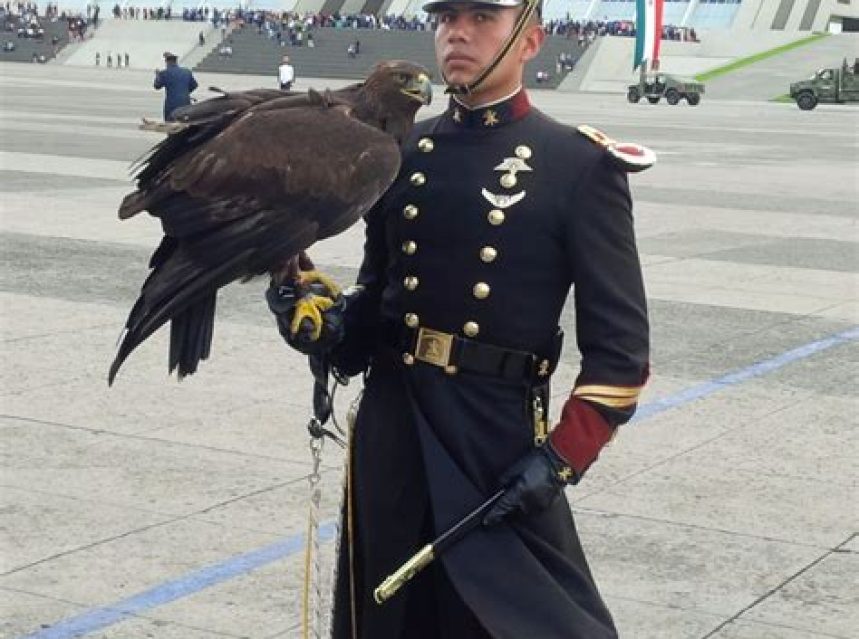Mexican Military Uniform

The history and evolution of military uniforms hold fascinating stories, and the Mexican military is no exception. From their compelling history on the battlefield to their undeniable influence on fashion, Mexican military uniforms encompass a captivating narrative. In this blog post, we will delve into the rich history and evolution of Mexican military uniforms, exploring the design elements, symbolism, and their undeniable impact on the world of fashion. Join us as we embark on a journey to uncover the secrets and significance behind these distinguished attires of Mexico’s brave military forces.
The History of Mexican Military Uniforms
Mexican military uniforms have a rich and fascinating history that spans several centuries. These uniforms have not only served practical purposes but also acted as symbols of Mexican identity and history. From the early influences of indigenous cultures to the evolution influenced by European military traditions, Mexican military uniforms have endured many changes throughout time.
In the early periods of Mexican history, indigenous cultures greatly influenced the design elements of military uniforms. Indigenous warriors adorned themselves with vibrant feathers, jaguar pelts, and intricate patterns symbolizing their rank and status. These design elements were not only aesthetically pleasing but also represented the warrior’s connection to their ancestral heritage and spiritual beliefs. Over time, as Mexico underwent colonization, European military traditions began to influence the design of military uniforms.
During the colonial era, Mexican military uniforms closely resembled those of the Spanish conquistadors. The uniforms were largely influenced by the Spanish military and reflected the hierarchical structure of the Spanish army. The uniforms were adorned with symbols of rank, such as epaulets and different colored tassels, to distinguish officers from soldiers. These design elements not only served practical purposes but also acted as a visual representation of the wearer’s position within the military hierarchy.
As Mexico gained independence from Spain in the early 19th century, the design of military uniforms underwent significant changes. The new Mexican military sought to establish its own national identity through its uniforms. The uniforms became more simplified and practical, abandoning some of the decorative elements inherited from the Spanish. However, certain design elements still remained, such as the use of colors to signify different branches of the military.
| Year | Design Influences | Significant Changes |
|---|---|---|
| Pre-Colonial Era | Indigenous cultures | Intricate patterns and vibrant feathers |
| Colonial Era | Spanish conquistadors | Epaulates, tassels, and rank symbols |
| 19th Century | Mexican nationalism | Simplification and practicality |
Throughout the 20th century, Mexican military uniforms continued to evolve, taking influence from both domestic and international sources. The use of camouflage patterns became prevalent during this time, reflecting the changing nature of warfare. Symbolism also played an important role in the design of Mexican military uniforms, with elements such as the national flag, eagle, and serpent being incorporated into the uniform design.
In conclusion, the history of Mexican military uniforms is a testament to the rich cultural heritage and ever-changing nature of Mexican society. From the influence of indigenous cultures to the impact of colonization and nationalism, the design elements and symbolism of these uniforms have evolved over time. Mexican military uniforms continue to serve as a visual representation of Mexican identity and history, showcasing the nation’s resilience and pride.
Design Elements of Mexican Military Uniforms
Mexican military uniforms have long been known for their unique design elements, each carrying a rich history and cultural significance. From the vibrant colors to the intricate details, these uniforms showcase the pride and identity of the Mexican military. The design elements of Mexican military uniforms are a reflection of the country’s heritage, with influences from both indigenous traditions and European styles. Let us delve deeper into the various design elements that make Mexican military uniforms so distinctive and visually captivating.
One of the most prominent design elements of Mexican military uniforms is the use of vibrant colors. This is seen in the uniforms of various branches of the military, such as the army, navy, and air force. The colors used often include shades of green, red, and gold, which are symbolic of strength, bravery, and patriotism. These bold colors not only serve as a visual representation of Mexican identity but also communicate a sense of authority and unity.
In addition to the use of vibrant colors, Mexican military uniforms also feature intricate embroidery and decorative patterns. These embellishments are often seen on the sleeves, collars, and pockets of the uniforms. The embroidery work is done meticulously, with great attention to detail, showcasing the craftsmanship and skill of Mexican artisans. The patterns used in the embroidery often draw inspiration from traditional Mexican motifs, such as Aztec symbols, floral designs, and geometric patterns. These design elements not only add aesthetic beauty to the uniforms but also pay homage to Mexico’s rich cultural heritage.
Another notable design element of Mexican military uniforms is the incorporation of traditional accessories and headdresses. For instance, the charro hat is commonly worn by Mexican military personnel. This iconic hat originates from the charro tradition, which is deeply rooted in Mexican culture and history. The charro hat is typically adorned with decorative elements such as silver conchos and colorful ribbons, adding a touch of elegance to the uniforms. These traditional accessories not only serve as an homage to Mexican heritage but also differentiate Mexican military uniforms from those of other nations.
In conclusion, the design elements of Mexican military uniforms play a significant role in showcasing the country’s culture, heritage, and identity. The use of vibrant colors, intricate embroidery, and traditional accessories all contribute to the distinctive and visually captivating nature of these uniforms. From the charro hats to the richly embroidered patterns, each design element tells a story about Mexico’s history and its pride in its military. Whether on display during ceremonial occasions or worn in active service, Mexican military uniforms are a testament to the country’s rich design heritage and its commitment to its military traditions.
Evolution of Mexican Military Uniforms
The evolution of Mexican military uniforms is a fascinating journey that spans centuries of history. Mexican military uniforms have constantly evolved to reflect changing political, social, and cultural landscapes. From the early days of the Aztec Empire to the modern era, these uniforms tell a story of the nation’s struggle for independence, territorial expansion, and national identity.
The evolution of Mexican military uniforms can be traced back to the time of the Aztec civilization. In Aztec society, warriors wore vibrant and elaborate costumes made from feathers, animal skins, and precious metals. These uniforms were not only practical for battle but also symbolized the warrior’s rank, skill, and loyalty. As Mexico became colonized by the Spanish, the indigenous warrior culture merged with European military traditions, giving rise to a unique blend of styles.
During the colonial period, Mexican soldiers were heavily influenced by the uniforms of the Spanish conquistadors. They adopted elements such as the tricorn hat, doublet jacket, and breeches. However, as Mexico sought independence from Spanish rule in the early 19th century, a distinct Mexican military identity began to emerge. The design elements of Mexican military uniforms started incorporating national symbols, such as the eagle and serpent from the Mexican coat of arms, as well as the national colors of green, white, and red.
The 20th century marked a significant turning point in the evolution of Mexican military uniforms. As Mexico experienced political and social upheaval, the military played a crucial role in maintaining stability and enforcing laws. During the Mexican Revolution, military uniforms became more practical and functional, reflecting the guerrilla warfare tactics employed by various factions. Camouflage patterns and lightweight fabrics were introduced to blend in with diverse terrains and climates.
- Keywords: evolution, Mexican military uniforms, Aztec civilization, Spanish conquistadors, design elements, national symbols, Mexican Revolution
| Timeline | Key Developments |
|---|---|
| Pre-Colonial Period | Feathered costumes and animal skins |
| Colonial Period | Spanish conquistador influence |
| 19th Century | Emergence of Mexican military identity |
| 20th Century | Practical and functional uniforms |
The symbolism in Mexican military uniforms holds great significance. Medals, ribbons, and insignias display a soldier’s achievements, awards, and rank within the military hierarchy. These symbols not only honor individual soldiers but also inspire pride and camaraderie within the armed forces. Additionally, Mexican military uniforms have had a notable influence on fashion trends. The iconic tricolor palette and distinctive designs have been adapted by fashion designers, creating a sense of national pride and celebrating Mexico’s rich cultural heritage.
In conclusion, the evolution of Mexican military uniforms is a testament to the nation’s history, culture, and quest for independence. From the ancient Aztec warriors to the modern armed forces, these uniforms have undergone significant transformations, blending indigenous traditions with European influences. The design elements and symbolism in Mexican military uniforms have not only served functional purposes but have also become powerful symbols of national identity. Through its distinct evolution, Mexican military uniforms continue to shape and inspire the nation’s fashion and sense of pride.
Symbolism in Mexican Military Uniforms
Mexican military uniforms have a long and rich history, with each element of the uniform carefully designed and imbued with symbolism. These symbols not only represent the Mexican military’s history and heritage, but also serve to convey important messages to both military personnel and civilians. Let’s explore some of the key symbols found in Mexican military uniforms and their meanings.
One of the most prominent symbols in Mexican military uniforms is the national coat of arms. This iconic emblem features a golden eagle perched on a cactus with a serpent in its beak. The eagle is a symbol of power, bravery, and strength, while the cactus represents the foundation and resilience of the Mexican people. The serpent is associated with knowledge and wisdom. The national coat of arms is prominently displayed on the chest or shoulder of military personnel, serving as a proud representation of Mexico’s national identity.
Another important symbol found in Mexican military uniforms is the Aztec-inspired imagery. The Aztecs were an ancient civilization that once inhabited the region that is now modern-day Mexico. The military uniforms often incorporate traditional Aztec designs, such as intricate geometric patterns and stylized representations of animals, to pay homage to this rich cultural heritage. These symbols not only celebrate Mexico’s indigenous roots but also serve as a reminder of the country’s diverse and vibrant history.
In addition to national symbols and Aztec-inspired designs, Mexican military uniforms also feature rank insignias that indicate the hierarchical structure within the military. These insignias are typically displayed on the epaulets or sleeves of the uniform and are represented by different symbols or arrangements of symbols, such as stars, bars, and stripes. The rank insignias allow military personnel and civilians alike to quickly identify the roles and responsibilities of individuals in the armed forces.
- Symbolism: National coat of arms, Aztec-inspired imagery, rank insignias
- Meanings: National identity, cultural heritage, hierarchy and organization
| Symbol | Meaning |
|---|---|
| Eagle | Power, bravery, strength |
| Cactus | Foundation, resilience |
| Serpent | Knowledge, wisdom |
In conclusion, Mexican military uniforms are not just practical clothing worn by military personnel, but they are also a reflection of Mexico’s vibrant culture, history, and national identity. The symbolism found in these uniforms, such as the national coat of arms, Aztec-inspired imagery, and rank insignias, serves to honor the country’s heritage and communicate important messages. The combination of rich symbolism and practicality makes Mexican military uniforms truly unique and significant.
Influence of Mexican Military Uniforms on Fashion
When it comes to fashion, there’s no question that military uniforms have had a huge influence throughout history. From camouflage prints to tailored silhouettes, military-inspired fashion has become a staple in many people’s wardrobes. One specific category of military uniforms that has had a significant impact on fashion is Mexican military uniforms. The unique design elements, symbolism, and rich history of these uniforms have made them an endless source of inspiration for designers and fashion enthusiasts alike.
One of the key design elements that have influenced fashion is the use of bold colors and intricate patterns in Mexican military uniforms. The vibrant hues and intricate detailing in these uniforms have been adapted into various fashion pieces, adding a touch of drama and excitement to everyday outfits. Whether it’s the striking combination of red, green, and white colors in the Mexican flag or the detailed embroidery seen in traditional uniforms, these elements have become synonymous with Mexican-inspired fashion.
Another significant influence of Mexican military uniforms on fashion is the use of specific symbols and emblems. Mexican uniforms often feature symbols such as eagles, serpents, and cacti, which hold great cultural and historical significance. These symbols have been incorporated into jewelry, accessories, and even prints on clothing, creating a sense of connection to Mexican heritage and identity. By embracing these symbols, fashion designers have not only paid homage to Mexican military traditions but have also made a bold statement about the power of cultural pride and identity in fashion.
Frequently Asked Questions
Q: What is the history of Mexican military uniforms?
Mexican military uniforms have a rich history that dates back to pre-Columbian times. They have been influenced by various cultures, including the Mayans and Aztecs, as well as Spanish conquistadors. Over the years, these uniforms have evolved to reflect changing styles, military tactics, and political ideologies.
Q: What are the design elements of Mexican military uniforms?
Mexican military uniforms typically feature a combination of traditional and modern design elements. These may include distinctive colors, such as the tricolor scheme of green, white, and red, as well as unique insignia, badges, and rank markings. The design also incorporates practical features for combat effectiveness and protection.
Q: How have Mexican military uniforms evolved over time?
Mexican military uniforms have undergone significant changes throughout history. Early uniforms consisted of simple garments made from natural fibers, while modern uniforms utilize advanced materials and technologies for improved functionality. The evolution also reflects shifts in military tactics, societal norms, and political regimes.
Q: What symbolism is found in Mexican military uniforms?
Mexican military uniforms often carry symbolic meanings that represent national identity, military excellence, and historical significance. Symbols can include national emblems, patriotic colors, and traditional motifs. These symbols contribute to the sense of pride and unity among members of the Mexican military.
Q: How have Mexican military uniforms influenced fashion?
Mexican military uniforms have often served as a source of inspiration for fashion trends. Elements such as distinctive colors, decorative details, and silhouettes have been adopted and incorporated into civilian clothing. This crossover between military uniforms and fashion has helped popularize certain styles and made them iconic within Mexican culture.
Q: What is the significance of Mexican military uniforms in Mexican culture?
Mexican military uniforms hold great significance in Mexican culture as they are associated with patriotism, heroism, and national defense. They serve as a visual representation of Mexico’s military history and the sacrifice of its armed forces. Mexican military uniforms also play a ceremonial role in various national events and celebrations.
Q: How can the history of Mexican military uniforms be explored further?
The history of Mexican military uniforms can be further explored through museums, historical archives, and academic research. By delving into these resources, one can uncover more details about specific time periods, key figures, and significant events that have shaped the evolution and symbolism of Mexican military uniforms.



